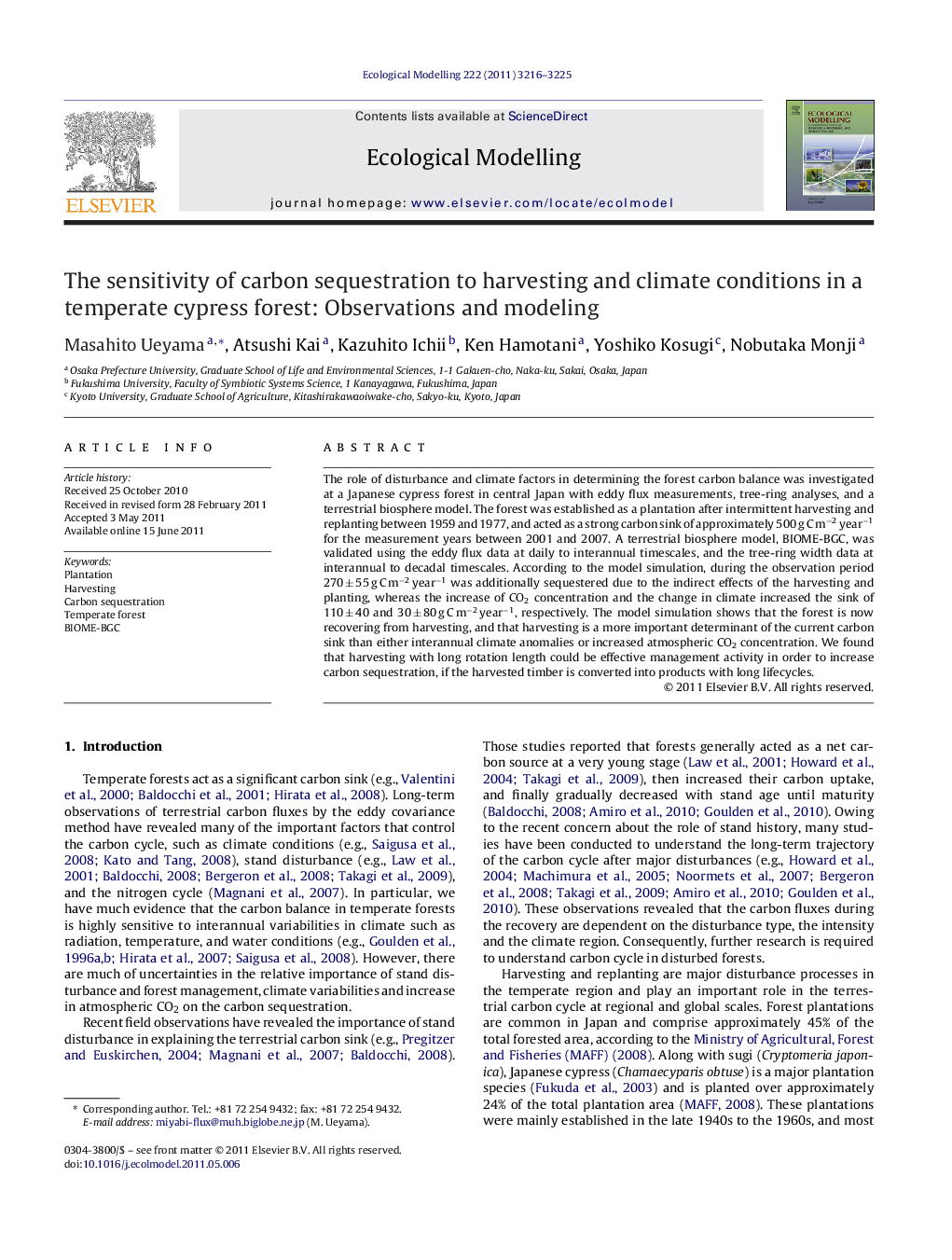| Article ID | Journal | Published Year | Pages | File Type |
|---|---|---|---|---|
| 4376680 | Ecological Modelling | 2011 | 10 Pages |
The role of disturbance and climate factors in determining the forest carbon balance was investigated at a Japanese cypress forest in central Japan with eddy flux measurements, tree-ring analyses, and a terrestrial biosphere model. The forest was established as a plantation after intermittent harvesting and replanting between 1959 and 1977, and acted as a strong carbon sink of approximately 500 g C m−2 year−1 for the measurement years between 2001 and 2007. A terrestrial biosphere model, BIOME-BGC, was validated using the eddy flux data at daily to interannual timescales, and the tree-ring width data at interannual to decadal timescales. According to the model simulation, during the observation period 270 ± 55 g C m−2 year−1 was additionally sequestered due to the indirect effects of the harvesting and planting, whereas the increase of CO2 concentration and the change in climate increased the sink of 110 ± 40 and 30 ± 80 g C m−2 year−1, respectively. The model simulation shows that the forest is now recovering from harvesting, and that harvesting is a more important determinant of the current carbon sink than either interannual climate anomalies or increased atmospheric CO2 concentration. We found that harvesting with long rotation length could be effective management activity in order to increase carbon sequestration, if the harvested timber is converted into products with long lifecycles.
► We evaluated disturbance effects in the carbon balance of a Japanese plantation. ► The model was validated by using the eddy flux data and the tree-ring width data. ► Harvesting was more important in the long-term sink compared with climate or CO2. ► Long rotation length could be effective management activity to increase carbon sink.
